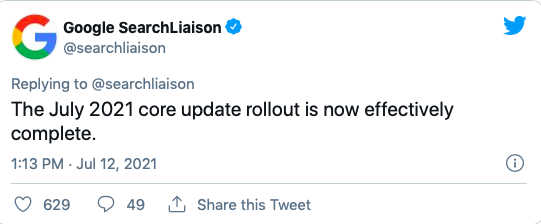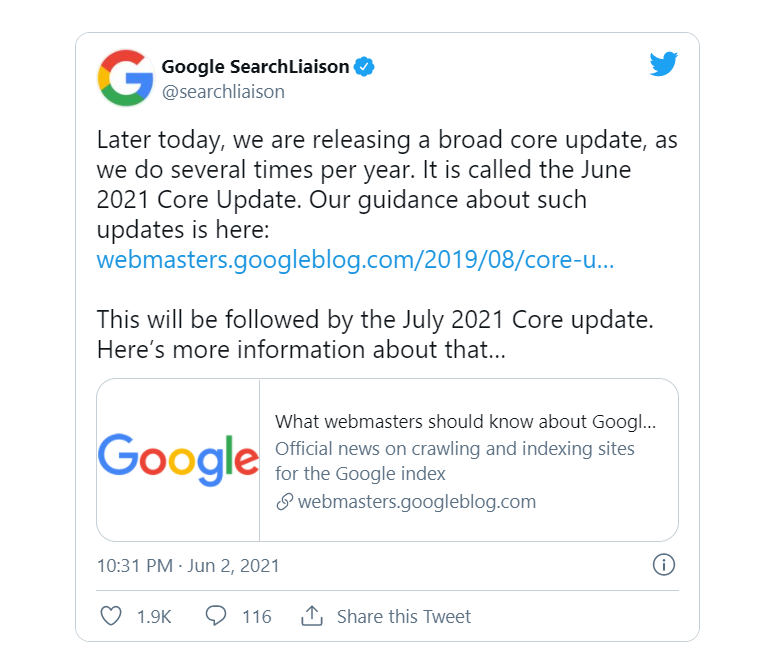On July 12, 2021, Google confirmed the completion of its most recent core update. It was officially announced by way of the company’s search liaison Twitter page. Usually, the company completes a roll out of one of these core updates around every few months. However, the timeline of this project differs due to the different levels of readiness of some aspects of the update. While certain parts of the update were ready to be released, others had not yet been completed, pushing Google to go about a process that was completed in two parts.
The initiation of the second part of the rollout occurred on July 1, 2021 — about a month after the June 2 release date of part one. This happened over a span of 12 days with the final completed version of the update being in use on July 12. Although both parts supported the foundation of the core update, part 1 — the section released in June — was more significant and contributed substantially to the project as a whole when compared to its counterpart.
As with other core updates in the past, this one is global meaning that it does not specifically target or bring about unique changes when looking at factors such as region, language, or website category.
Google states that these core updates are “significant, broad changes” that are meant to ensure the quality and functionality of their search algorithms and systems. The goal is maintain efficiency within the search engine so as to continuously present authoritative, relevant content to those who use it.
The rollout of updates such as this usually alters the search results ranking of websites. Pages may go up or down depending on the actions pushed by the update; however, if a website happens to move down following the ranking, this does not mean that it is not meeting Google’s qualifications or content expectations. The assessment of new activity within the search engine and rankings gives way for rankings to be moved around and changed. For many, this can end up being a positive due to previously unrewarded sites being moved higher up in the rankings following a core update.
Analyses of the recent updates found that sites whose rankings moved down despite high quality content were those revolving around YMYL (“Your money or your life”). This is the name Google gives to websites that focus on topics pertaining to finance, purchasing recommendations, reviews, education, health, and law. More specifically, YMYL websites that targeted niches such as self development and automotive news fell. Those who performed well were older, large websites that have recently been seeing lower levels of visibility in the past few years.
With Google’s new core update, there have once again been changes to the success and prevalence of different SEO techniques. The effects of the rollout suggest that the update has given more weight to older SEO strategies along with the age of the domain and backlinks. Some of these changes were reversed in the second part of the update which altered these effects as well. Any changes regarding your site that occurred during June or from July 1 – July 12 can most likely be attributed to these actions.


